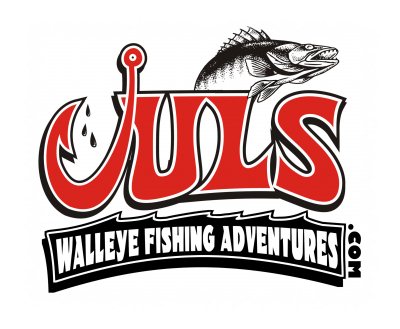Running Off Shore Boards Set to Release...11/21/2024
by Capt Juls on 11/21/24For years, I ran my Off Shore inline planer boards so that both releases were attached to the line on their way in. This past year, I tried running them the way I learned on Mark Romanack's YouTube Channel, "Fishing 411".
I've always ran mine with the OR-16 (red release with the pin in the center of the pad), on the back, and the Snapper release on the front arm.
Mark runs his with the OR-19 (orange release that is the same tension as the OR-16, but doesn't have a pin in it), and the Snapper on the back.
The idea is to make 4-5 twists in the line via a little loop around the setter's finger, and then clip the OR-19 on the twisted part. Then, attach the Snapper on the back, with the closing lever pushed forward (away from the board), so that the pin falls in front of the line, keeping the board from detaching on its own.
This allows the angler to detach the front release with a flick of the wrist...(if a fish hits, but it doesn't disengage the front arm on its own, you'll need to manually detach it), and bring the board in, with more ease.
Just point the rod tip straight at the board, tighten down the line, and give it a flick of the wrist. That's usually enough to pop the line from the release.
The main advantage to having the front arm release, and stay attached to the rear end, is so that the board can flip around, and come in without resistance. It won't cross all the other lines inside of it...and diminishes the chances of tangling on the way in.
The board will float back, and out of line...then, it centers up behind the boat...allowing a person to bring that fish in, tangle free.
It's definitely making my life easier out there, so I hope this helps someone else, too.
I was running Sunline Supernatural 20# test, for years, but had to switch it out, to use the release method. It didn't hold up, and would break. A friend told me to try the Trilene Big Game 20# test, that he had been using for over a year, and really liked it. I trusted his judgement, and bought a 7800yd spool, to spool up 10 trolling reels, for the season. I didn't know when I bought it, how long this line holds up, compared to the Sunline. I didn't have to respool as often as I did with the Sunline.
Even though the Sunline was closer in diameter to the line used in the Precision Trolling Data, the Trilene Big Game is close enough for me. I don't try and do math in my head when I'm out there, to get within inches. The regular settings do just fine getting me in the strike zone, so I don't worry about it.
One note for those that have never used a Snapper Release. It can close two ways, and only one way is acceptable in this application....for good reason.
The Snapper has a lever type closure, and can be pushed forward, or backwards. In the backwards position (lever facing the board), it can release from the line, but in the forward position, it puts the line behind a pin, so it can't come off the line.
Since we are already releasing the front arm, we do not want the back to be set to release.
Losing a board is a pain in the butt. If the board comes off, you would need to pick everything up very quickly, and then go and try to find a little 12 inch board, that floated a 1/2 mile away from you. It's not fun. Especially, when you assign someone to keep an eye on it, while the rest of us pick up lines, and you look over to see him looking at us, instead of where the board is. I lost two boards last season, and even with my name and phone number on the boards, they were never returned.
Another note, of what I learned using this method is, that the loop should be kept small, so it can't catch on the locknut holding the release on, or the spring on the Tattle Flag. Larger loops tend to do that more, making it so it can't release. This is easy to keep from happening, by just keeping the loop no bigger than the tip of your finger.
It's simple fix to those struggling with bringing boards in, that are still attached to the front arm, like I used to do. It's a game changer, for sure!
Give it a try. The boards come with the OR-19 on the front arm and the OR-16 on the back, so they are set up right out of the box, to run like this. The only reason I do not use the OR-16 on the back, is because I let customers set lines too, and sometimes they are not the best at making sure the line gets behind the pin. The Snapper is much easier for my customers to use.
Hope this helps....:)
Capt Juls
Comments (0)


